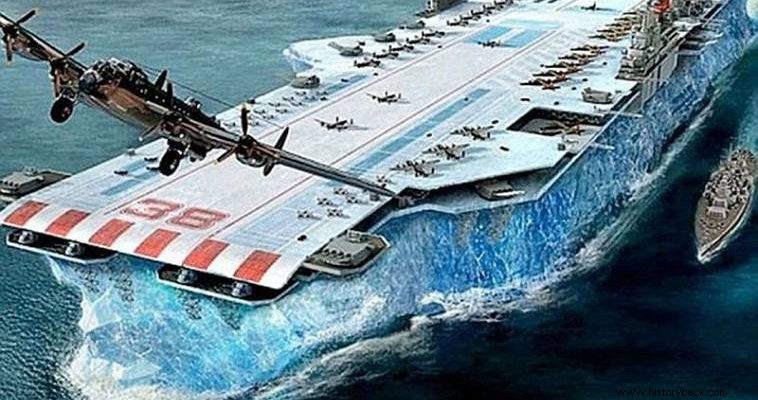
In 1942 the Allies had already started planning the liberation of Europe from the Germans. British Prime Minister Churchill had considered the use of large floating platforms, from which Allied aircraft would take off, which would provide immediate cover for the landing Allied divisions.
At the same time the Battle of the Atlantic was in full swing and Allied convoys crossing the ocean needed air cover to deal with German submarines and bombers. Lord Mountbatten, head of the Combined Operations office, had Geoffrey Pike as his scientific adviser.
Pike, when informed of the allied plans presented the crazy plan of creating aircraft carriers out of ice. These "ships" would be 1,200 m long and 180 m wide. and a draft of 40m. They could, Pike argued, build large numbers of unsinkable aircraft carriers cheaply and quickly. The "ships" would be unsinkable, as their vast width would not allow any torpedo or bomb to destroy them and would be extremely easy to repair.
Churchill enthusiastically accepted Pike's proposal and an order was given to build a working prototype in frozen Canada. From the beginning, however, it appeared that the cost was also huge – it exceeded 100 million dollars for the prototype alone – and a series of technical problems that had not been initially calculated would have to be addressed.
The operational prototype was 18m long. width 9 and draft 6. A wooden frame was placed around a suitably carved block of ice. On the "ship" were placed three large compressors with cooling liquid (freon), which were supplied with energy by 10HP electric motors. Cold air circulated through a network of pipes.
By the time the tests were completed, however, the Battle of the Atlantic had begun to be won by the Allies thanks to the rate of construction of American shipyards, both in terms of merchant ships, the famous Liberty, and escort aircraft carriers, of which the Americans built, during during the war, 122. 29 large aircraft carriers were also built. Consequently there was no reason to seek extreme solutions and the plan was abandoned.
